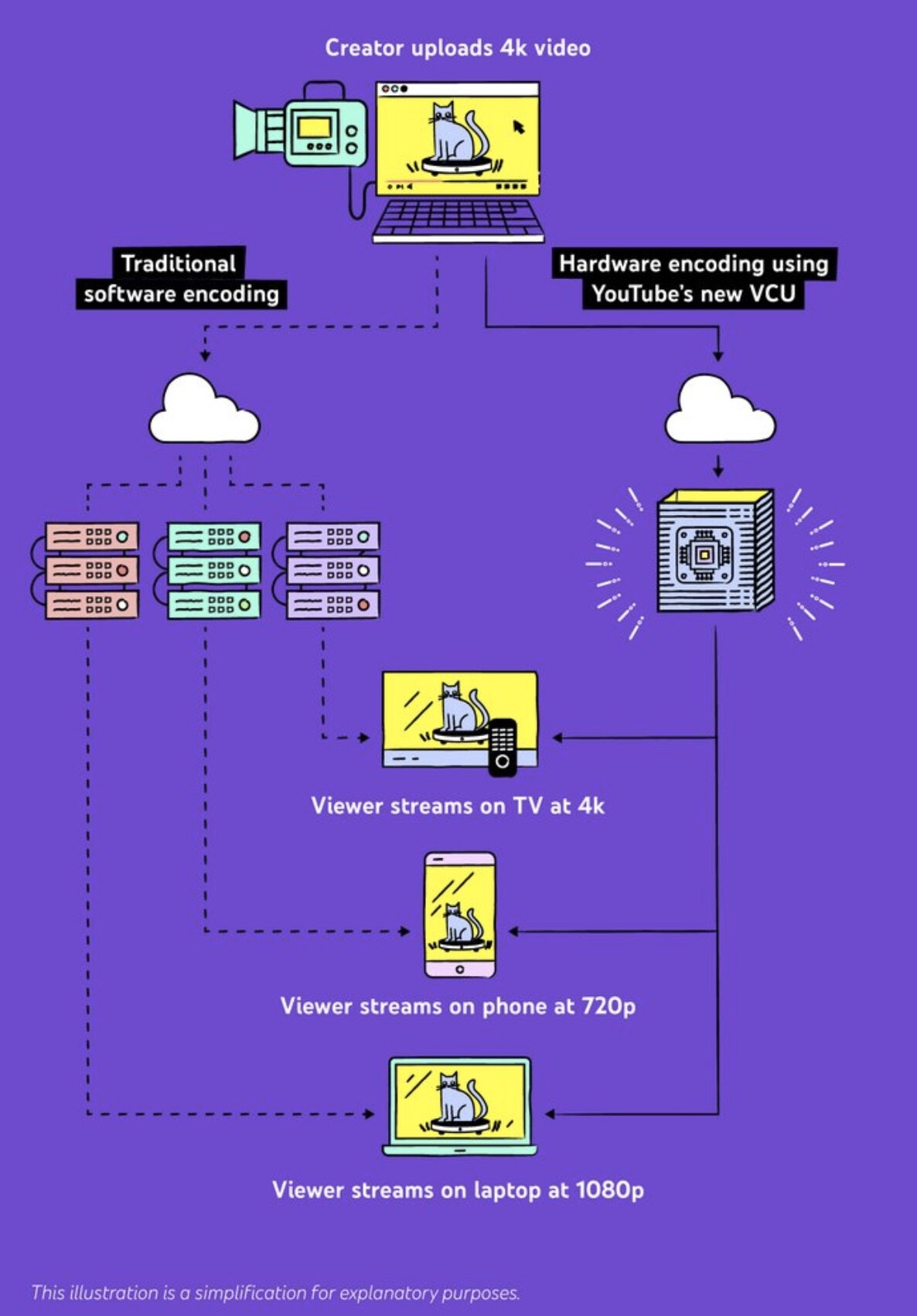YouTube engineers had a problem: people kept uploading videos to the service and converting (transcoding) them to the right formats wasn’t happening fast enough. At the rate everything was going, collapse was feasible. That’s when Partha Ranganathan, head of engineering at Google, was clear that something had to change. They had to stop relying on other people’s hardware and create their own chips.
What happened. That effort that began seven years ago crystallized with the so-called Argos Video Coding Units (VCUs), some very special chips that have allowed YouTube to deal with our particular fever for uploading videos to the service so that we can then enjoy them on all kinds of devices.
A chip just for transcoding? It turns out that converting videos to suitable formats is an enormously demanding process. Ranganathan explained in a recent interview how “transcoding was consuming a large part of our compute cycles.”
The hardware used for this was powerful, but general-purpose processors were used that were not particularly efficient in this area, so this engineer was clear: a chip specifically designed for transcoding had to be created.
A very demanding task. These chips, which are now in their second generation – they already have the next two in development -, are responsible for converting the 500 hours of video that is uploaded to YouTube every minute so that they are available in various screen formats and with various codecs of compression: the idea is to be able to enjoy them with the appropriate quality and resolution both on your Smart TV and on your smartphone, and that means having to transcode the original video into up to 15 different versions.
This is reminiscent of the chips used to mine bitcoin. When bitcoins appeared on the scene, anyone could mine this cryptocurrency with their computer, but soon the task became so complex and demanding that specific chips were created to perform just this task.
These chips were ASICs (Application-Specific Integrated Circuits) that could boast of being good at one thing and one thing only: mining bitcoin. The concept has been extrapolated to other fields, and Google and YouTube have taken advantage of it for their TPUs and now for these VCUs called Argos.

Source: YouTube
GPUs don’t pay off. Scott Silver, another of the managers involved in the development, explained that although the GPUs are capable of doing a good job, in the end “if most of your computers are transcoding video and you are paying whatever, many tens of millions or hundreds of millions of dollars a year to do it, it would be obvious that you have room for [invertir en] an ASIC to do it.
that’s nice. Creating its own chips to transcode video seems to work really well for the company. According to Google, these developments are between 20 and 33 times more powerful than the hardware they previously used for transcoding. Its presence is invisible to users, but this change has allowed Google and YouTube to deal with the enormous flow of videos that users upload on a daily basis.
check, check, check. Not only that, but it also gives the business even more control over its service and the infrastructure it depends on. The decision is reminiscent of the one Apple made when ditching Intel and creating its M1 chips a couple of years ago: as then, Google now makes sure not to rely on third parties and to tune the performance and efficiency of its hardware specifically to your needs. That introduces other challenges, of course, but for companies of the size of Google, that decision pays off.













